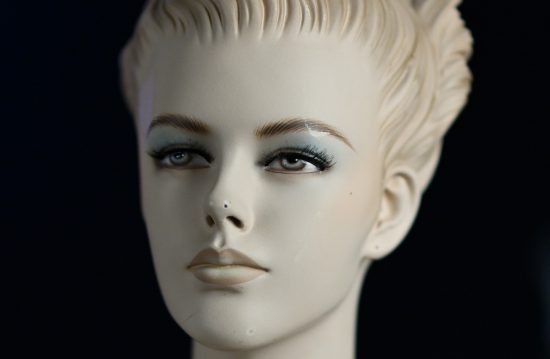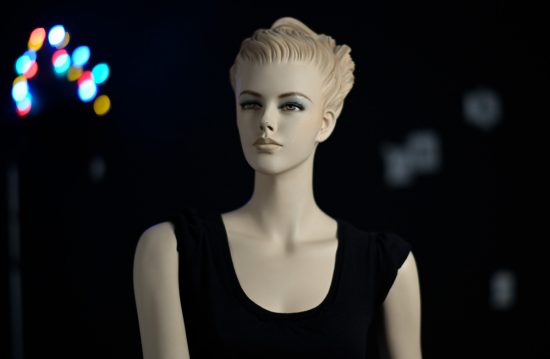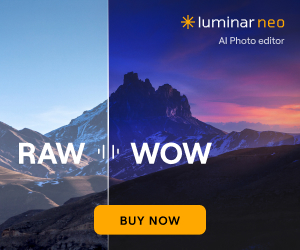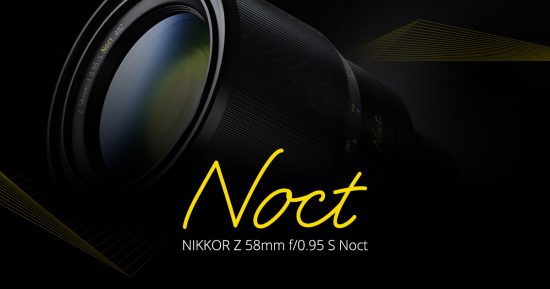
Nikon NIKKOR Z 58mm f/0.95 S Noct lens review by Dré de Man (additional information on the lens can be found here, for pricing and availability check B&H Photo):
The new Nikon Z mount is all about the possibility to design excellent fast lenses of medium and shorter focal lengths. The unique combination of a very small flange distance and very large mount diameter makes it all possible. It was no surprise then, that soon after the first rumors about the Nikon Z system surfaced on NikonRumors, a patent of a super-fast 58mm lens was discovered.
Since many years, Nikon-aficionados were dreaming of a true heir to the Noct Nikkor 58mm f/1.2. The 58mm f/1.4 G was in a couple of ways better than the old Noct-Nikkor, but it was not called a Noct by Nikon for a reason. The F mount limited the design too much to make it as revolutionary as the Noct once was when it was introduced in 1977. Designer Haruro Sato called the 58mm f/1.4 G a three-dimensional hifi-lens and he was right. At infinity (where it matters) the 58mm f/1.4 G is really excellent, even larger apertures, but at f/1.4 up close not so much. A true heir to the Noct should be about bokeh *and* sharpness wide open *and* it should be fast; faster than f/1.2.
Enter of the Nikkor Z 58mm f/0.95 S Noct. It is fast, no doubt. But the million-dollar (ok, eight thousand-dollar question) is: will it be sharp and still have a great bokeh? You can buy other f/0.95 lenses like the Leica Noctilux 50mm f/0.95 and even lenses that have a much lower price, but they have all one thing in common: they are soft wide open certainly away from the center and have bad corners that never get really good. Besides that bokeh is also often not as beautiful as you’d like. Yes, you have a blurry background wide open, but it is not always really pretty. Bokeh is not related to the depth of field, after all.
So the first thing we’re going to look at is bokeh and center sharpness.
I tested the lens in a place with a Z of course, to be precise in the studio of Hans Kreuzekamp in Zwolle, The Netherlands (thanx!). Hans Kreuzekamp was one of the first shops to order one and you can still buy it there, you can be sure you’ll get a good copy 🙂 I used a 58mm f/1.4 G along the Noct, to be able to compare it, especially with regards to bokeh.
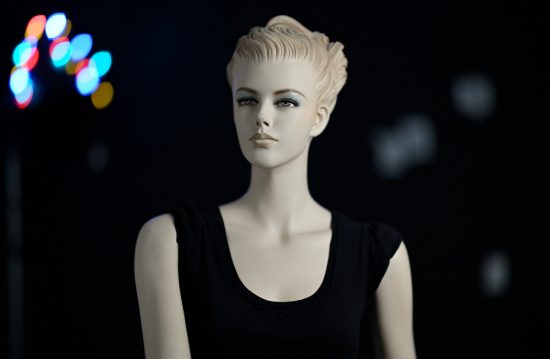
Noct at f/0.95, complete image. The image looks contrasty and sharp, but is it really?
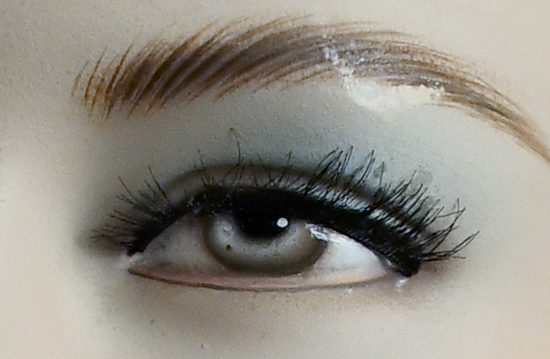
Noct at f/0.95 super detail. Ok, just to give you an idea, I’ll add the same detail from the 58mm f/1.4G:
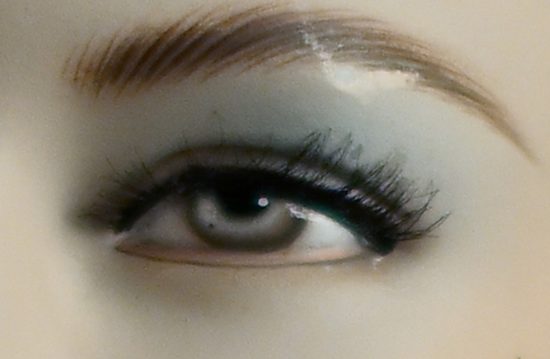
58mm f/1.4 G at f/1.4 super detail. OK, maybe that’s not fair, then let’s show the result of the 58mm f/1.4G at f/2, because then it’s equal to most 50mms wide open:
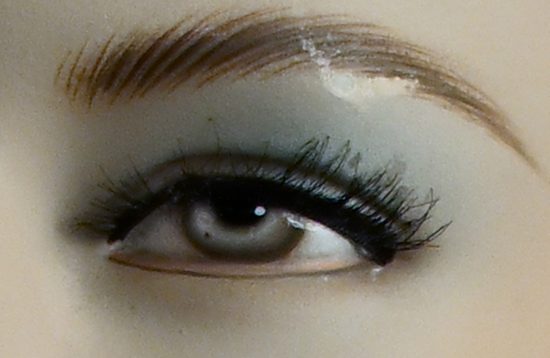
58mm f/1.4G at f/2 super detail. To make it even more difficult for the Noct, I looked at bokeh in the corners. All lenses suffer from what we call cat-eye bokeh wide open. What interested me was, how fast it would disappear. In other words: would it be gone at f/1.4?
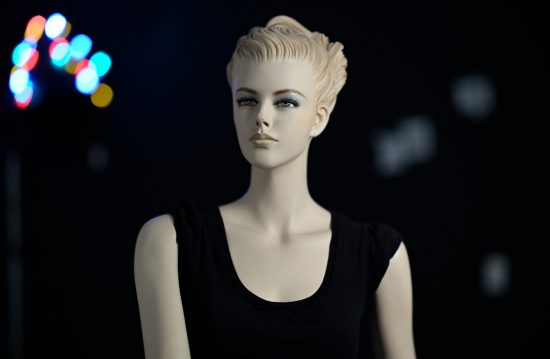
Noct at f/1.2, complete image. At f/1.2, the bokeh balls are already rounded. Only in the extreme corners, they are elliptical, but I’d say very acceptable, even for movies. Let’s compare with the 58mm f/1.4 G at f/1.4:
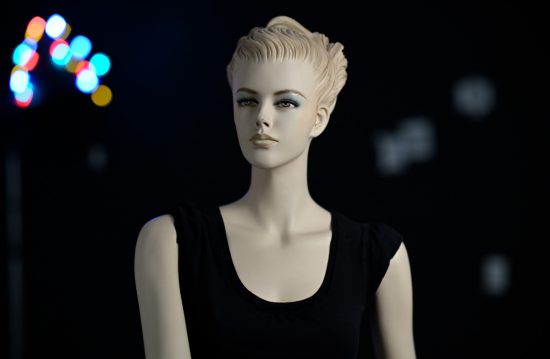
At f/1.4 the bokeh balls are almost perfect. What’s more: the bokeh as such is also softer compared to the bokeh of the 58mm f1.4 G, not only the bokeh balls but the cards in the background look softer.
More about sharpness
I do resolution and contrast tests for a long time and have tested most lenses of the last two years that were relevant. Now most of us know that the Z lenses are very good. Center sharpness wide open is always great but even border and corner sharpness are great and at larger apertures than with other lenses. Now a person who doesn’t know much about lenses would say: ‘Ok, so this lens is good too. Big deal. Still, no reasons for it to be so expensive and large’.
But in optics, not all lenses are created equal. Things get a lot more difficult if you want to make an f/0.95 lens for a full-frame with a reasonable field of view. Longitudinal spherical aberration and coma get stronger with the power of two of the aperture, transverse spherical aberration even with the power of three. And the Noct hardly displays any of those. Some slight transverse spherical aberration in the corners, that’s all. There are more lenses that are good wide open in the center, but almost all of those lenses get considerably worse at the borders and even some of the newest fast lenses for mirrorless from the two competitors never get excellent in the corners, even at f/5.6. One of the exceptional qualities of the Noct is that the center image quality of this lens extends to the borders. We’ll get to that later, in the conclusion.
In Nikon Capture NX-D you can just switch off software corrections. (Hey, conspiracy trolls, did you hear that? The built-in profiles in Adobe software aren’t there to hide things, at least not with Nikon lenses). If you switch it off, you see that distortion is minimal and lateral CA too, longitudinal CA is small for such a fast lens but not absent. Hardly any coma or astigmatism, this lens is almost diffraction-limited in combination with the Z 7. If you know then that bokeh (no, not blurriness due to the large aperture, bokeh) is simply better than any lens I’ve tested, then we know Nikon did an excellent job. First by creating the Z mount, then by creating the Noct.
Now you say probably: ‘but you can’t use it, it’s too heavy and focusing is impossible’. Well, it handles just like a 24-70 or 70-200, better than the Canon 28-70mm f/2 in any case.
But what really surprised me was that it was very easy to focus manually. I made a series of pictures with dim light while walking around a subject (well, a doll) and just by looking through the viewfinder I got an excellent keeper rate (like 95%). It worked so good that focus peaking turned out to be a lot less exact and much less useful. In hindsight, I understand why. Firstly the lens has wide open already excellent contrast and sharpness. Secondly: the shallow depth of field helps a lot. As soon as you focus, you see your point of focus move. Thirdly: while at f/4 your focus error might be the difference between the right and the left eye, at f/0.95 it will be the difference between the front or the middle of the eye-lashes. In the first case, you’ll notice it more, even if the depth of field is larger. YMMV though, because my eyesight is 120%.
While talking about the depth of field: it is not unusable small. In fact, the DOF is about equal to the DOF of an 85mm at f/2, if you keep the same distance. So the idea is, that you get the blurry background of an 85mm at f/2, but with the larger field of view of a 58mm.
So if we’re taking stills, the lens gives you extra possibilities, creative and otherwise, but you have to pay for it. But since it is so much better than all other lenses, including the Zeiss Otus 50mm f/1.4, you don’t pay much for what you get. The Noctilux is also more expensive – and less good.
Cine
If you compare it to cine lenses, the lens really is a bargain though. Just have a look at this Cooke lens at B&H. It’s more than two stops slower and about 15,000 dollars more expensive.
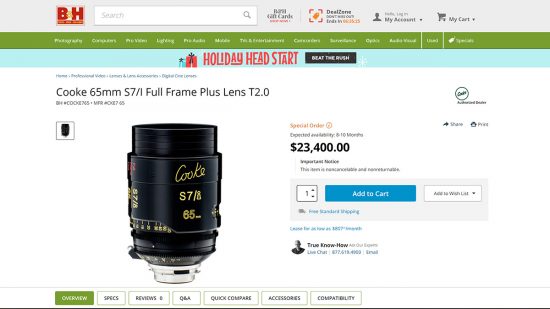
And hey, do you think it’s a coincidence that the Cooke-logo and the Noct-logo are both yellow and use a similar funny font?
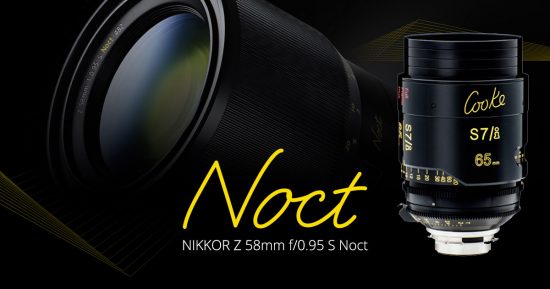
I don’t know how they make those lenses at Cooke, but it takes longer to produce a Cooke lens than a baby. So yes, the Noct is on a special order (but available in Zwolle:), but I’m sure you’ll get it long before you’d get a Cooke lens. And really, what could the Cooke lens do, the Noct couldn’t do better? The Noct has excellent sharpness all over the field from f/0.95 (since the corners are cut off at 16:9) and the most beautiful bokeh you can wish for, plus it has a very natural image rendition, sharp but not harsh.
And guess what? Since the flange distance is so small and since the last lens element is at the flange, you just have to use it with a Nikon Z camera! I wouldn’t be surprised if it’s Nikon’s ticket to Hollywood. Soon in this theater: The Noct!
P.S. On my site www.dredeman.com you’ll find high res versions of the pictures, a sharpness and contrast graph and more info about the built of the lens etcetera. Follow me on Twitter @dredeman if you want to keep in touch or on Facebook facebook.com/dredeman or Instagram (starting December) https://www.instagram.com/dredeman/ or LinkedIn. Oh in case you’re Dutch: the complete test and more will be published in the next issue of the magazine Digifotopro. It’s part of an article on trends in photography.
This review was originally published here and it is used with permission.
If you have an interesting idea for a guest post, you can contact me here.
